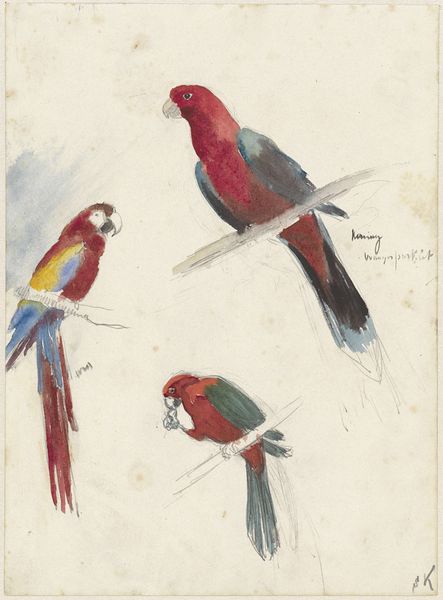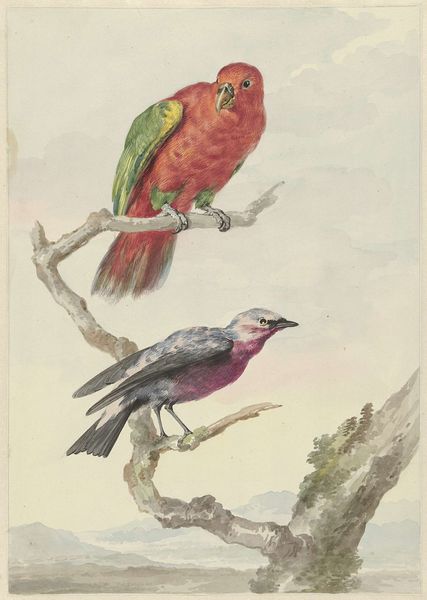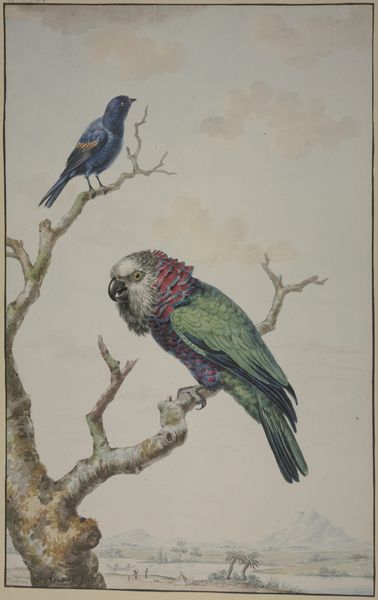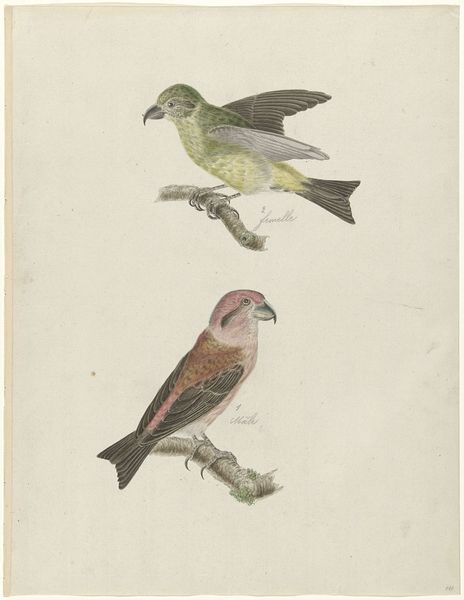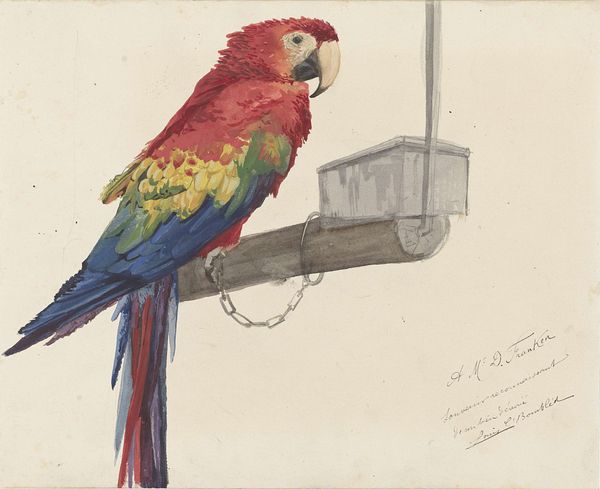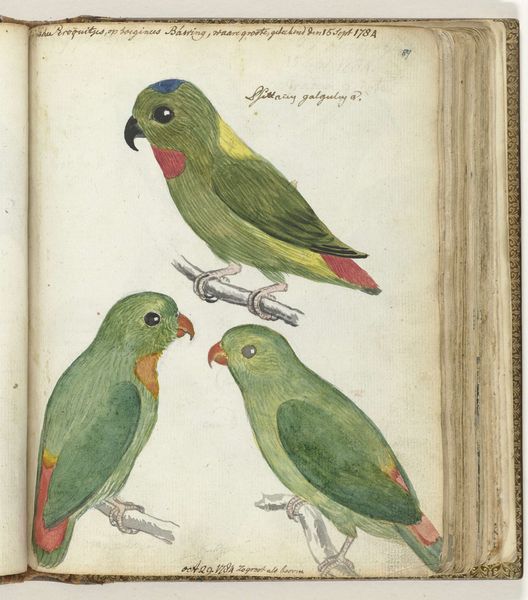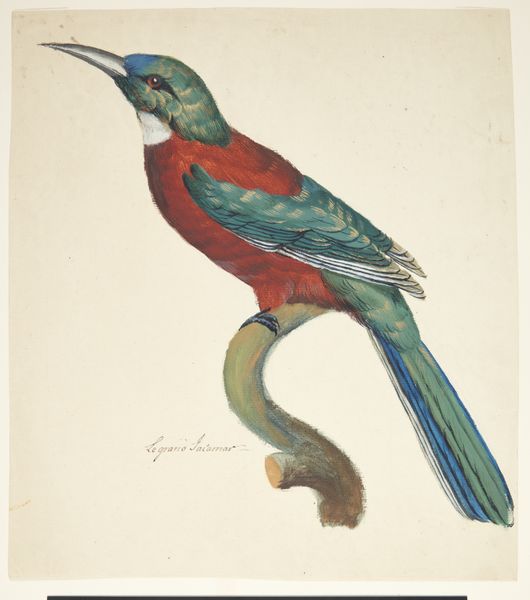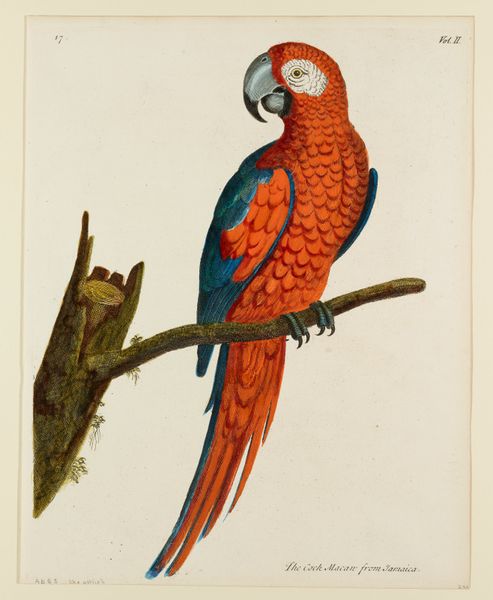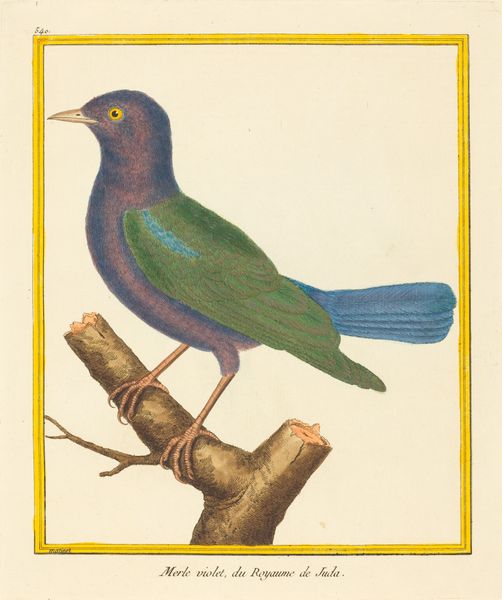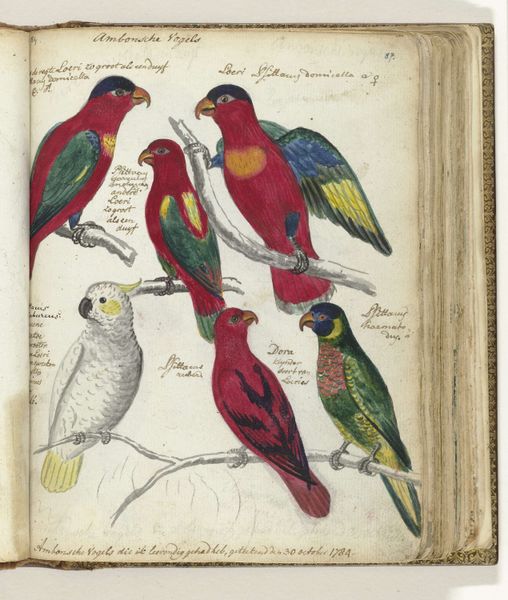
drawing, coloured-pencil, print, watercolor
#
drawing
#
coloured-pencil
# print
#
watercolor
#
coloured pencil
#
watercolour illustration
#
academic-art
Dimensions: sheet: 21 15/16 x 14 3/4 in. (55.7 x 37.5 cm)
Copyright: Public Domain
This is a study of Eclectus parrots, made with watercolor and graphite by Edward Lear, the English artist best known for his nonsense verse, in the 19th century. Lear’s parrot studies were made in connection with his work as a zoological illustrator for the Zoological Society of London. The image shows his skill in depicting the bird’s colorful plumage, and also his detailed knowledge of its anatomy. During the 19th century, zoological illustration flourished as part of an expansive culture of scientific documentation and specimen collection. Institutions like the Zoological Society played a significant role in creating a public appetite for natural history, popularized through museum displays, books and journals. By depicting the parrots so vividly, Lear appealed to the Victorian fascination with the exotic and to the growth of natural sciences as a popular, and indeed patriotic, endeavor. Lear’s work demonstrates that the meaning of art is contingent on the social and institutional context in which it is made. Historians consult archives of scientific organizations, illustrated journals, and natural history displays to better understand his work.
Comments
No comments
Be the first to comment and join the conversation on the ultimate creative platform.
